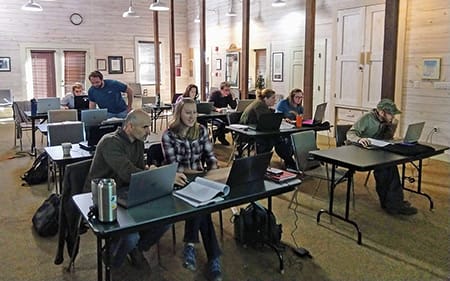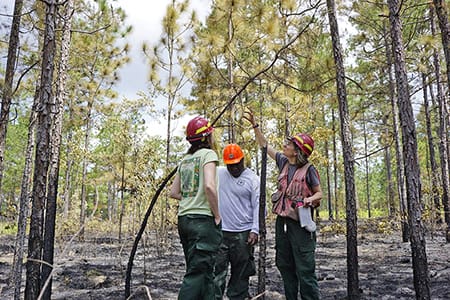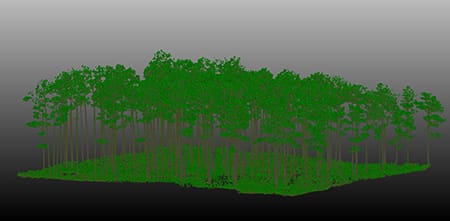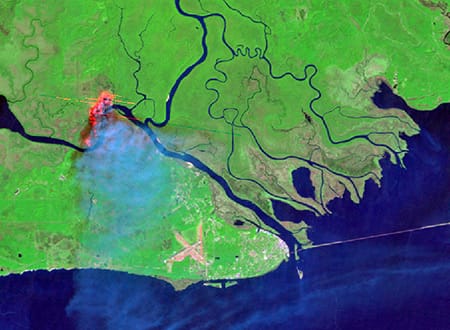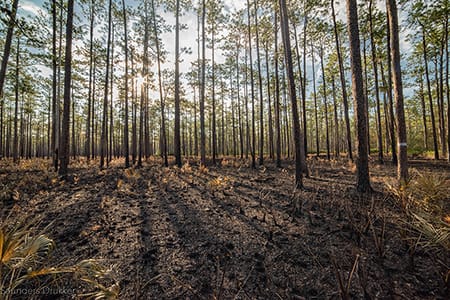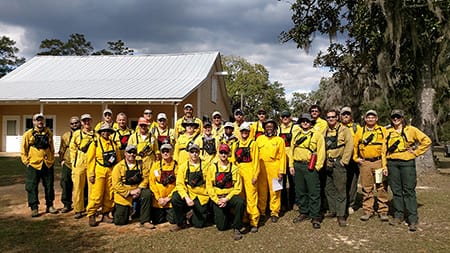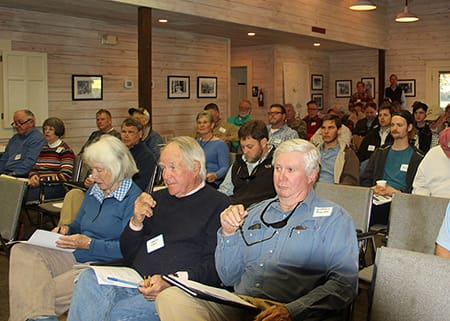
Return Dove Band Numbers for Recurring Study
The third year of a study by Tall Timbers and other partners hopes to capture data about movement patterns of mourning doves in the Red Hills and Albany regions of Georgia and Florida.
During the 2022-23 hunting season, the initial year of the study done in collaboration with several private properties in the region and the University of Georgia, 24 bands were reported back to Tall Timbers out of 497 put onto birds, a 5% return.
Out of the 24 harvested banded birds, 17 were harvested on the same site in which they were banded and six were harvested on different sites, two of which were sites not involved in the banding last summer.
The furthest bird movement documented was a bird banded in the Red Hills which was harvested in Palm Beach County in early January.
We are again asking everyone to keep a close eye out for leg bands on any of your harvested birds during dove season.
Reporting your harvested banded birds directly to the USGS Bird Banding Lab (BBL) and Tall Timbers will allow us to better understand the ecology and demographics of doves in this region.
After reporting bands to the the BBL, please send an email to Dwayne Elmore (delmore@talltimbers.org) at Tall Timbers including the band number, the date you harvested the bird, and the location where you harvested the birds (preferably a set of GPS coordinates, if possible). Harvest location coordinates will allow us to better understand the distance the dove traveled from the location it was banded to the location it was harvested.
Have no fear, we will not release this more detailed location information and will only pass on the harvest state for the official Bird Banding Laboratory data.
For more information about the scope of the project, please see the following article originally published in our 2022 edition of Quail Call. Thank you in advance for the submission of any banded birds and good luck this year!
The 2024-25 mourning dove seasons for both Georgia and Florida are listed below. Check your state’s laws for all hunting season dates.
- Georgia: September 6th – October 12th, November 22nd – 30th, and December 19th – January 31st
- Florida: September 27th – October 19th, November 8th – 30th, and December 19th – January 31st
Mourning Doves: The Other Highly Prized Bird
By Nicolas Lusson, Lead Game Bird Technician, originally published in the Summer 2022 edition of Quail Call.
Dove hunting is an important cultural and economic activity in the Red Hills, with some fields in existence for over a hundred years. However, over the past decade dove use of properties has varied dramatically. Some properties now have so few doves at their managed fields that hunting no longer occurs, whereas other properties harvest several hundred to thousands of doves in a single season.

Most hunting and harvest in the Red Hills and Albany regions occur during the early phase of the dove season, which raises concern about the effect of harvest on local populations.
In addition to high variability of field use, there has been an overall observed decline in dove harvest across many properties in the region. Most hunting and harvest in the Red Hills and Albany regions occur during the early phase of the dove season, which raises concern about the effect of harvest on local populations.
There is also concern that the amount of dove fields in the area is causing the local population to disperse more widely across the landscape, reducing the apparent dove population. Several property managers and our research group have instigated a study, along with Florida Fish and Wildlife Conservation Commission and Georgia Department of Natural Resources, to begin to explore these potential issues. We are interested in examining the movement patterns of mourning doves within and among the properties of the Red Hills and Albany regions of Georgia and Florida.
Also, we aim to calculate the harvest rates to compare with statewide rates in Georgia and Florida. Our primary approach for measuring these processes is banding a lot of doves relying on you dead-eye shooters to “capture” some of them! All we ask is that you report the band numbers to us!
Banding provides data on the geographical and temporal distribution of the dove harvest, origins of birds harvested, mortality, survival, longevity, differential vulnerability of age and sex classes to shooting, and other information useful to managing the species.
To monitor harvest rates, many states, such as Georgia and Florida, collaborate with the United States Fish and Wildlife Service (USFWS) to band doves every year. Breeding Bird Survey (BBS) data reflects that dove populations have been growing in the region. However, recent anecdotal evidence based on banding data suggests a decline in dove populations or an increase in recovery rates. Finer scale information about the relationship between hunter harvest rates and dove populations would inform larger scale population processes and management.
In addition to information about the harvest rates, banding can be used to study movements. Finally, we can explore landscape features and management actions that lead to greater success in dove hunting.

